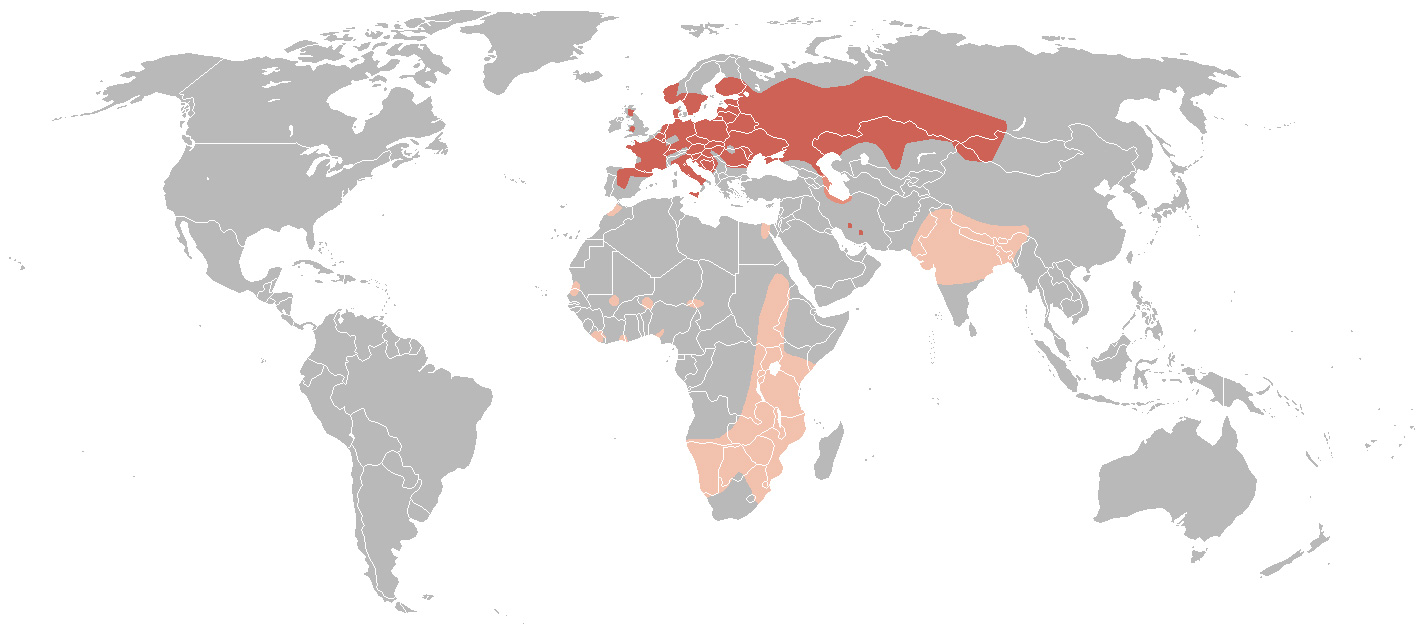
Animal description
The Spotted Crake (Porzana porzana) is a fascinating bird species that belongs to the Rallidae family, which is known for its diverse array of rail, crake, and coot species. This small yet intriguing bird captivates birdwatchers and ornithologists alike with its elusive nature and distinctive appearance.Characterized by its short, stout body and relatively short tail, the Spotted Crake measures approximately 19-22 cm in length, with a wingspan ranging from 37 to 42 cm. One of its most striking features is its plumage. The bird's back and wings are adorned with a rich, olive-brown color, intricately marked with white and black spots and streaks, creating a beautiful mosaic that camouflages it perfectly within its wetland habitats. Its underparts are a paler grey, speckled with black, and the chest may have a pinkish hue, adding to its distinctive appearance. The face is marked by a bold white stripe above the eye, and the bill is relatively short and pointed, ideal for its omnivorous diet, ranging from invertebrates to plant matter.
The Spotted Crake's legs and feet are another notable feature, being long and slender, perfectly adapted for life in marshy environments. These appendages are a striking green-yellow, providing a stark contrast to its darker body and further adding to its unique aesthetic.
This bird is a creature of the marshes, favoring reed beds, swamps, and wet meadows across Europe and the western parts of Asia. Its distribution is quite broad, encompassing a variety of wetland habitats, but always with a preference for dense vegetation which offers protection and nesting sites. The Spotted Crake is a migratory species, spending its breeding season in the temperate regions of Europe and Asia before flying south to Africa and the Indian subcontinent to overwinter.
Breeding behaviors of the Spotted Crake are as secretive as the bird itself, with nests well-hidden in dense vegetation close to the water's edge. The nest is a simple construction of plant material, where the female lays a clutch of 6-15 eggs. Both parents partake in the incubation duties, which lasts about 20 days, and the chicks are precocial, meaning they are relatively mature and mobile shortly after hatching.
Despite its beauty and fascinating ecology, the Spotted Crake faces challenges due to habitat loss and degradation. Wetlands across the world are under threat from agricultural expansion, urban development, and climate change, impacting the crake's breeding and feeding grounds. Conservation efforts are therefore crucial to ensure the survival of this species, requiring international cooperation to protect the wetlands that are so vital to the Spotted Crake and countless other species.
In summary, the Spotted Crake is a small, elusive bird with a striking appearance and a preference for dense, wetland habitats. Its life cycle and behaviors are closely tied to the health of wetland ecosystems, making it an important species for monitoring the health of these vital environments.
Map of occurrence

Similar Animals
New photos of animals
Top 10 animals
- Dolphin gull (Leucophaeus scoresbii)
- Japanese macaque (Macaca fuscata)
- Stone loach (Barbatula barbatula)
- Galápagos tortoise (Geochelone nigra complex)
- Diana monkey (Cercopithecus diana)
- Russian tortoise (Testudo horsfieldii)
- Moustached guenon (Cercopithecus cephus)
- Greek tortoise (Testudo graeca)
- Common flying dragon (Draco volans)
- Common house mosquito (Culex pipiens)


